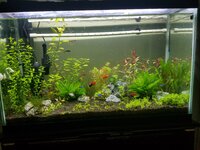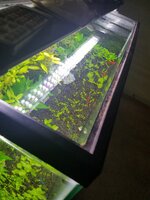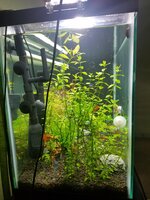Hello just seeking info on notrate levels and to clear my head a little more on the matter.
Can high nitrate cause plants to rot on the bottom, Lets say 80 ppm? I have co2 and my light is around low lighting. I judge this by my anubias showing no sign of algea. Before it did worh higher settings.
My montecarlo was having big leaves now seems to shrink. I have co2 and dosing ei. Could the light affect the size? Or algae building up from it growing slow
Thank you.
Can high nitrate cause plants to rot on the bottom, Lets say 80 ppm? I have co2 and my light is around low lighting. I judge this by my anubias showing no sign of algea. Before it did worh higher settings.
My montecarlo was having big leaves now seems to shrink. I have co2 and dosing ei. Could the light affect the size? Or algae building up from it growing slow
Thank you.





